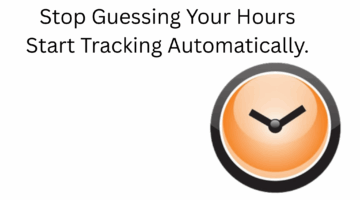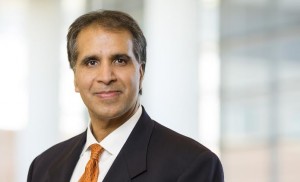
Berkeley’s safe, but what about other California schools?
Today the ABA House of Delegates sent back to the ABA’s Council on legal education a measure that would have required, as a condition for a law school’s continued ABA accreditation, that “at least 75 percent of [the] school’s graduates in a calendar year who sat for a bar examination must have passed a bar examination administered within two years of their date of graduation.” Even though the measure is deferred for now, there is reason to think that, on reconsideration, the Council will move forward to put it or something similar into effect eventually.
As I explained when I discussed this proposed measure last year, “as long as the bar exam exists as a barrier to entry into the profession, law schools need to make sure the vast majority of their graduates can pass (and schools should be addressing this matter whether or not they are worried about accreditation).” And because there are valid consumer-protection concerns present and also because federal loans and state subsidies are used to finance legal education, I think some kind of regulatory (rather than purely market-based-disclosure) response to the problem of low pass rates is inevitable. To the extent that enactment of a new standard will make it harder for schools to admit students who may not be great at standardized tests (like the LSAT and bar exams), and thus make it harder to enroll racially diverse student bodies, law schools will – whenever this measure or something like it becomes effective — have to find ways of coping with the challenge.

Stand With Survivors: Legal Tools To Make A Real Difference This DVAM
Enhance your legal skills to advocate for survivors of intimate partner violence.
Since I last wrote about this matter, 94 law deans wrote (about four weeks ago) a letter to the ABA Legal Education Council asking that it withdraw the proposal (which the Council did not) or that the House of Delegates reject the measure, largely to provide time to study issues raised by the abysmally low pass rate (62%) among first-time California-ABA-school-graduate takers on the July 2016 California bar exam. As the deans who joined the letter explained, if the recent California results become the “new normal” for the Golden State, then many schools in California that have a good track record of producing effective lawyers would under the proposed standard be in serious jeopardy of losing ABA accreditation, which would in turn make it very hard for them to continue to operate.
How ought this California data affect the analysis? Let’s begin with the (largely unnoticed) observation that while California’s situation may complicate implementation of the proposed standard for the reason the 94 deans mention, it also complicates inaction with respect to the current standard. Why? Because the current standard allows a school to remain accredited if its passage rate is within 15 points of the statewide average, which would mean a school in California could have a pass rate as low as 47% and still be protected by the safe harbor, a result that shouldn’t satisfy anyone.
More generally, and putting aside whether the ABA should concern itself with the problems of law schools in one particular state, why, precisely, is California’s bar pass rate so low (dropping for ABA schools from 76% three years ago to this year’s to 62%)?
The answer depends on how you approach the question. Some folks, including deans of some California law schools in op-eds they ran in December, have intimated that the California Bar examiners may have toughened their grading of the exam in recent years. This explanation doesn’t seem plausible, though, because California – like most other states – uses Multistate Bar Exam (MBE) scores for its passing cutoff, and then scales (or curves) the grades on the essay component of the exam to the aggregate MBE performance of the state’s takers. So unless the MBE is getting harder — which is something that some people suspect but that the MBE-makers have looked into and denied (albeit without making their investigative data public) — the California bar exam isn’t getting harder either. And if the MBE were harder this year, then it is difficult to explain the increase in pass rates in some large states like New York and Texas (even as rates fell in many other large states).

Chrometa: Turning Time Into Billable Value For Modern Lawyers
Adoption of Chrometa represents more than a technological upgrade; it reflects a professional philosophy that values accuracy, transparency, and efficiency.
Critics of many California law schools (and of legal education more generally) offer as an explanation for California’s woes the simple fact that admission standards at several California law schools have slipped in recent years. If schools are enrolling more students who are not as academically strong as their predecessors, then of course we would expect bar pass rates to decline. There is certainly much to this explanation, but we ought not to take it to mean that admissions standards are all that drive bar passage. There are many California schools that over- or underperform on the bar exam relative to the LSAT/college GPA metrics of their students, and many schools in California have had quite low pass rates recently even though their LSAT/GPA numbers have remained much higher than those of other schools who five years ago had high pass rates notwithstanding low LSATs/GPAs. So LSAT/GPA numbers do not measure everything relevant to bar passage, and what law schools do (or don’t do) once 1L students arrive is also important. Whether the classroom teachers at some schools are doing things less helpful to bar passage (or whether they are doing the same things they used to but have failed to adjust on account of changes in the student body academic indicators), we ought not to be fatalistic about improving bar pass rates.
All of this brings me to the biggest, in some proximate-cause sense, reason California’s pass rate is so low: its passing threshold is so high. California’s so-called “cut score” (the minimum passing score for the MBE, which, as noted above, carries over to the average passing threshold for the essays too) is a 144, which is second highest in the nation and considerably higher than those of many other large industrial states. (New York’s is 133, Pennsylvania’s is 136, Illinois’s is currently 134). Indeed, as pointed out in a letter written by 20 of California’s ABA-approved-law-school deans to the California Supreme Court last week, California takers’ performance on the MBE in July 2016 was considerably better than the national average, even as California’s pass rate was at or near the bottom nationally. Because of this “atypically” high cut score, which the 20 California deans say is not grounded in any sensible public policy, the deans ask the California Supreme Court to temporarily (pending further study) reduce California’s cut score (beginning with the July 2017 exam) to something in the 133-136 range.
Some critics say that California law schools ought to be fixing their admissions and/or instructional problems first, before they seek changes in the cut score, but it’s hard to see why. The two issues are completely separate, and there is no logical reason why dealing with an unjustifiably high cut score (if it be unjustifiably high) can’t proceed at the same time that schools seek to improve their student recruitment and legal training functions. The only counterargument I can think of is that lowering the cut score takes some pressure off of California schools to fix their own houses, but if California schools are (unfairly) under more pressure than schools in other states, why shouldn’t the state bar fix its own house now?
I don’t have a sense yet whether the California Supreme Court will be receptive to this request by the California deans. The politics will be complicated, and in some ways the ABA House of Delegates’ decision today takes some pressure off the California Supreme Court to act this year. Moreover, as I will explain in a later column, I think it will be politically easier for any state to revisit its cut score after it adopts the Uniform Bar Exam.
 Vikram Amar is the Dean of the University of Illinois College of Law, where he also serves the Iwan Foundation Professor of Law. His primary fields of teaching and study are constitutional law, federal courts, and civil and criminal procedure. A fuller bio and CV can be found at https://www.law.illinois.edu/faculty/profile/VikramAmar, and he can be reached at [email protected].
Vikram Amar is the Dean of the University of Illinois College of Law, where he also serves the Iwan Foundation Professor of Law. His primary fields of teaching and study are constitutional law, federal courts, and civil and criminal procedure. A fuller bio and CV can be found at https://www.law.illinois.edu/faculty/profile/VikramAmar, and he can be reached at [email protected].